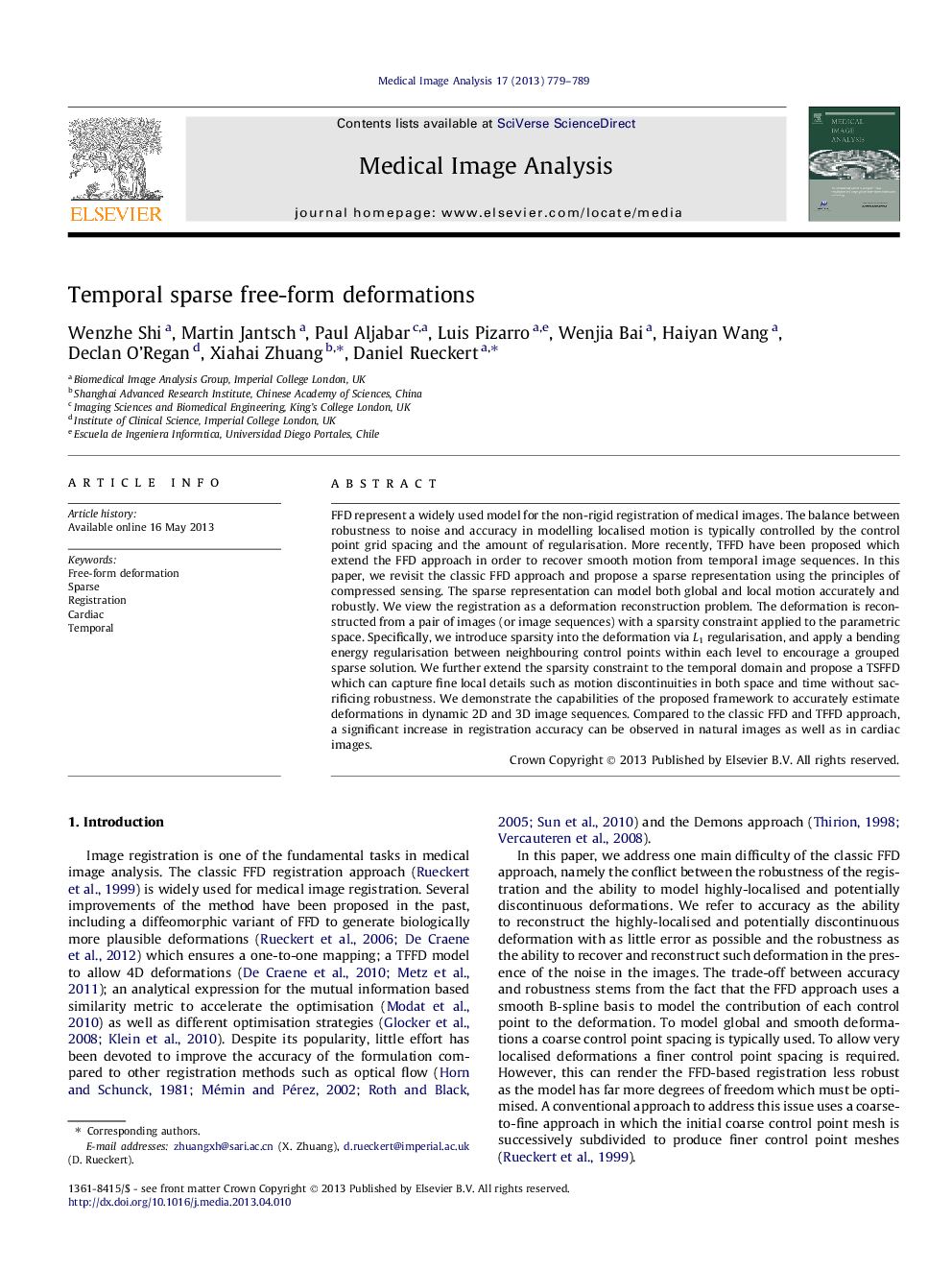| کد مقاله | کد نشریه | سال انتشار | مقاله انگلیسی | نسخه تمام متن |
|---|---|---|---|---|
| 443068 | 692526 | 2013 | 11 صفحه PDF | دانلود رایگان |

• Reconstruction of deformation with a sparsity constrain applied to the parametric space.
• A dense deformation field can be model by a sparse multi-level free-form deformation.
• The tracking performance increases significantly using sparsity constraint in four different datasets.
• We utilise both temporal and spatial sparsity in application to cardiac motion tracking.
• The accuracy is among the best results from recent cardiac motion tracking challenge.
FFD represent a widely used model for the non-rigid registration of medical images. The balance between robustness to noise and accuracy in modelling localised motion is typically controlled by the control point grid spacing and the amount of regularisation. More recently, TFFD have been proposed which extend the FFD approach in order to recover smooth motion from temporal image sequences. In this paper, we revisit the classic FFD approach and propose a sparse representation using the principles of compressed sensing. The sparse representation can model both global and local motion accurately and robustly. We view the registration as a deformation reconstruction problem. The deformation is reconstructed from a pair of images (or image sequences) with a sparsity constraint applied to the parametric space. Specifically, we introduce sparsity into the deformation via L1 regularisation, and apply a bending energy regularisation between neighbouring control points within each level to encourage a grouped sparse solution. We further extend the sparsity constraint to the temporal domain and propose a TSFFD which can capture fine local details such as motion discontinuities in both space and time without sacrificing robustness. We demonstrate the capabilities of the proposed framework to accurately estimate deformations in dynamic 2D and 3D image sequences. Compared to the classic FFD and TFFD approach, a significant increase in registration accuracy can be observed in natural images as well as in cardiac images.
Figure optionsDownload high-quality image (90 K)Download as PowerPoint slide
Journal: Medical Image Analysis - Volume 17, Issue 7, October 2013, Pages 779–789